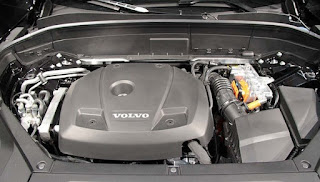The manufacturer-claimed 550 horsepower from the truck engine-based supercharged V-8 did not have much exotic technology, the GT is Ford's permanent stamp in sports car history.
Priced at the time at $150,000, the car was expensive but not exotically so. The big Ford accelerated like a car with more power for its price. Back then, other cars costing $150k consisted of a luxury car super-expensive edition:
the tuned BMW Alpina B7 sedan,
rough price of any tractor-trailer truck (requires a CDL),
stock Mercedes Benz S55 AMG,
and, if memory serves, different variations of the Porsche 911 Turbo, probably the Turbo S, which back then made somehow made less power than this big Ford.
Acceleration wise, the big Ford did the 0-60 time in 3.6 to 3.7 seconds, apparently depending on the weather and skill of the test driver who was testing it. Even today, that is still very fast.
Zero to 100 took around 12 seconds. Today, the Ford amazingly still does not have a confirmed and verified top speed -- Motor Trend tested 200.1 mph in late 2004. The car's 6 gears are extremely wide, almost like that of a truck - still thundering along in 5th gear around 200 mph.
A decade later, the car saw a careless revival, a V-6 powered car with nearly 650 hp -- car magazines cared but Ford fans, truck fans, and obviously V-8 fans didn't pay attention: they cared about preserving and treasuring the memory, stats, times, and great value that the 2005 and 06 Ford GT cars presented to the world.
the tuned BMW Alpina B7 sedan,
rough price of any tractor-trailer truck (requires a CDL),
stock Mercedes Benz S55 AMG,
and, if memory serves, different variations of the Porsche 911 Turbo, probably the Turbo S, which back then made somehow made less power than this big Ford.
Acceleration wise, the big Ford did the 0-60 time in 3.6 to 3.7 seconds, apparently depending on the weather and skill of the test driver who was testing it. Even today, that is still very fast.
Zero to 100 took around 12 seconds. Today, the Ford amazingly still does not have a confirmed and verified top speed -- Motor Trend tested 200.1 mph in late 2004. The car's 6 gears are extremely wide, almost like that of a truck - still thundering along in 5th gear around 200 mph.
A decade later, the car saw a careless revival, a V-6 powered car with nearly 650 hp -- car magazines cared but Ford fans, truck fans, and obviously V-8 fans didn't pay attention: they cared about preserving and treasuring the memory, stats, times, and great value that the 2005 and 06 Ford GT cars presented to the world.




